Researchers at Milan's Sforza Castle used ground-penetrating radar to map the area and discover secret passageways once described by Leonardo da Vinci.
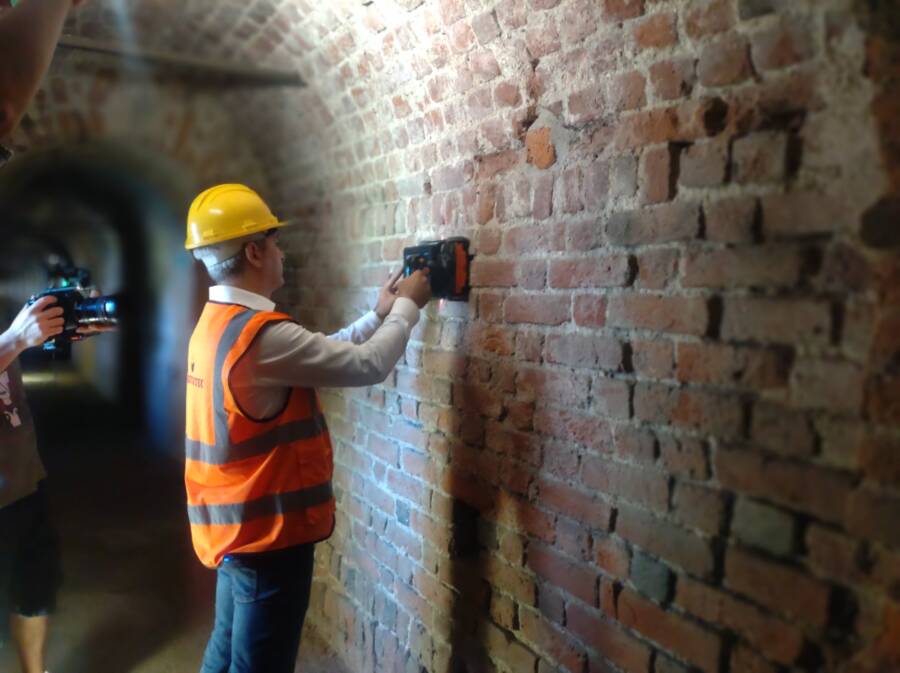
Politecnico di MilanoA researcher uses advanced technology to create a “digital twin” of Sforza Castle.
A centuries-long mystery has just been put to rest at Sforza Castle in Milan, Italy.
Using ground-penetrating radar and laser scanning, researchers from the Polytechnic University of Milan have uncovered hidden tunnels beneath the 15th-century castle that have been the subject of rumor for centuries.
This project, part of their effort to create a “digital twin” of the castle, has confirmed historical accounts of the tunnels, including those from Leonardo da Vinci, and opened the door to greater historical analysis and more immersive experiences for the castle’s visitors.
Researchers Start To Create A “Digital Twin” Of Sforza Castle In Milan
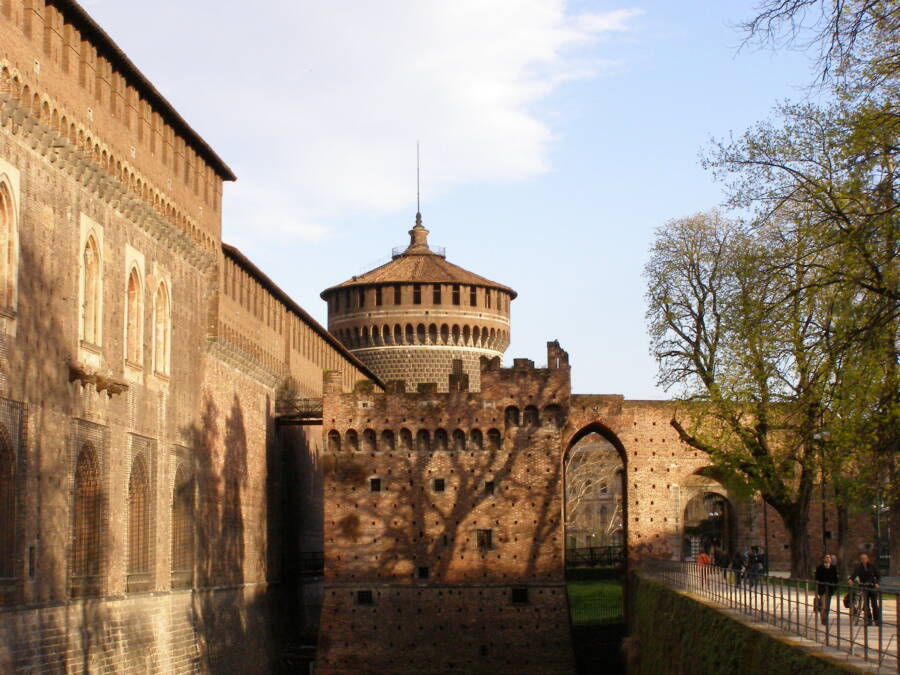
magro_kr/FlickrSforza Castle in Milan, Italy.
Doctoral students at the Polytechnic University of Milan recently began a thesis project involving the mapping of Sforza Castle.
The Milanese castle, built in the 15th century on top of the remains of an earlier fortress, has expanded and undergone several renovations in its centuries-long history, ultimately transforming into an impressive royal residence, especially in terms of its art.
In the 15th century, artists like Leonardo da Vinci and Donato Bramante were invited to paint frescoes in the castle. Da Vinci personally painted the frescoes in the Sala delle Asse, or “room of wooden panels,” which features floral motifs.
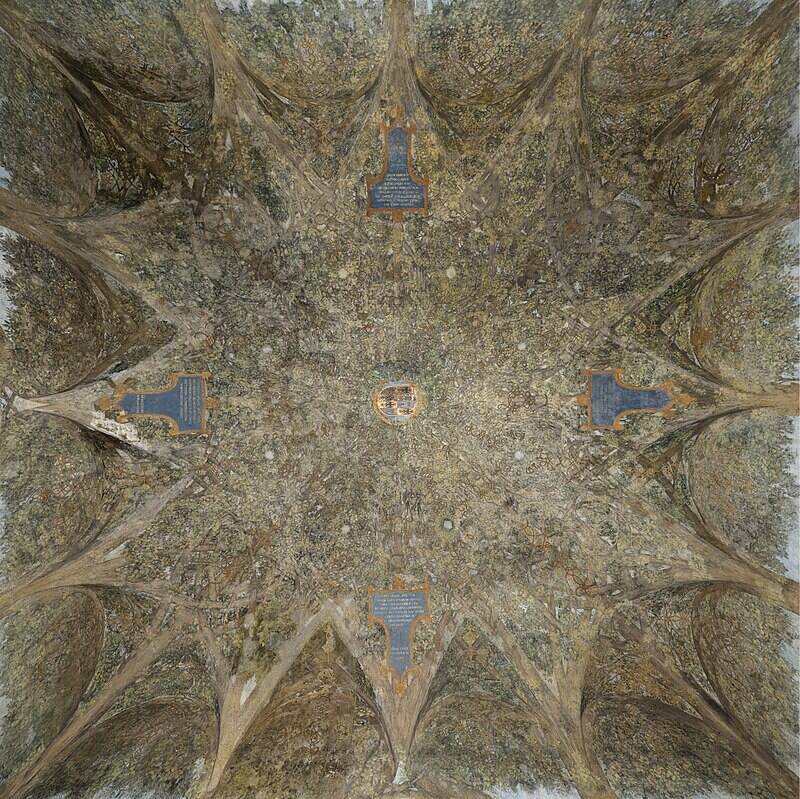
Wikimedia Commons / CC BY-SA 4.0The “Sala delle Asse,” or “room of the wooden panels,” painted by Leonardo da Vinci at Sforza Castle.
Alongside his frescoes, da Vinci also made note of the castle’s mysterious underground tunnels in his sketches. For centuries, mentions of these passageways fascinated historians. They are rumored to have been created by Ludovico Sforza, otherwise known as Ludovico il Moro, Duke of Milan, to connect Sforza Castle to the Basilica of Santa Maria delle Grazie, where his wife was laid to rest.
With the castle’s rich historical legacy in mind, researchers were eager to map out the castle, creating a “digital twin,” to identify any findings of historic importance and get to the bottom of the mystery surrounding Sforza’s long-rumored tunnels.
Revealing The Hidden Underground Tunnels Described By Da Vinci
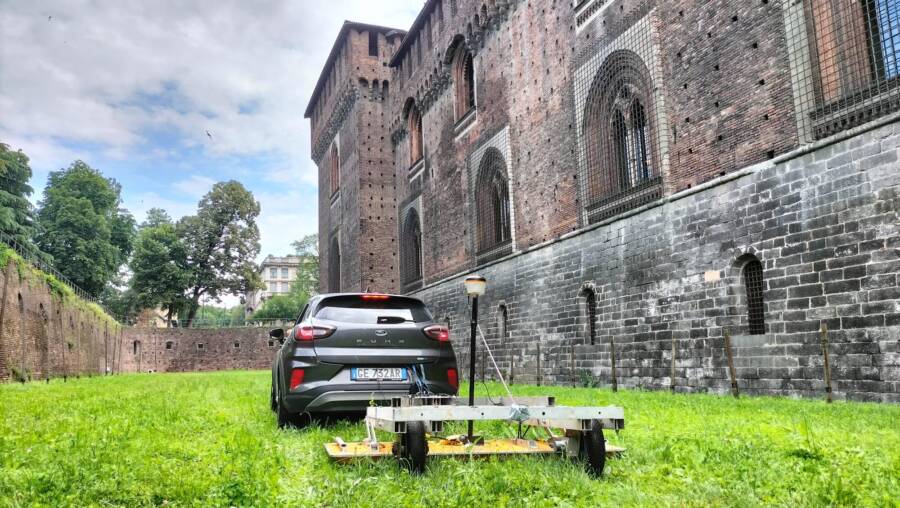
Politecnico di MilanoCars equipped with ground-penetrating radar map the underground tunnels at Sforza Castle.
The research team began their analysis by using ground-penetrating radar and laser scanners. After attaching ground-penetrating radar (which detects underground anomalies using electromagnetic waves) to cars, the team carefully drove across the castle’s grounds. The laser scanner then created 3D images of the findings.
Just a few feet underground, researchers discovered evidence of the long-rumored tunnels.
“The georadar has enriched the 3D model with data on known but inaccessible spaces, bringing to light unknown passages and ideas for further studies on secret passages,” Francesca Biolo, researcher in the Department of Architecture, Construction Engineering and Built Environment at the Polytechnic University of Milan, stated in a press release from the university.
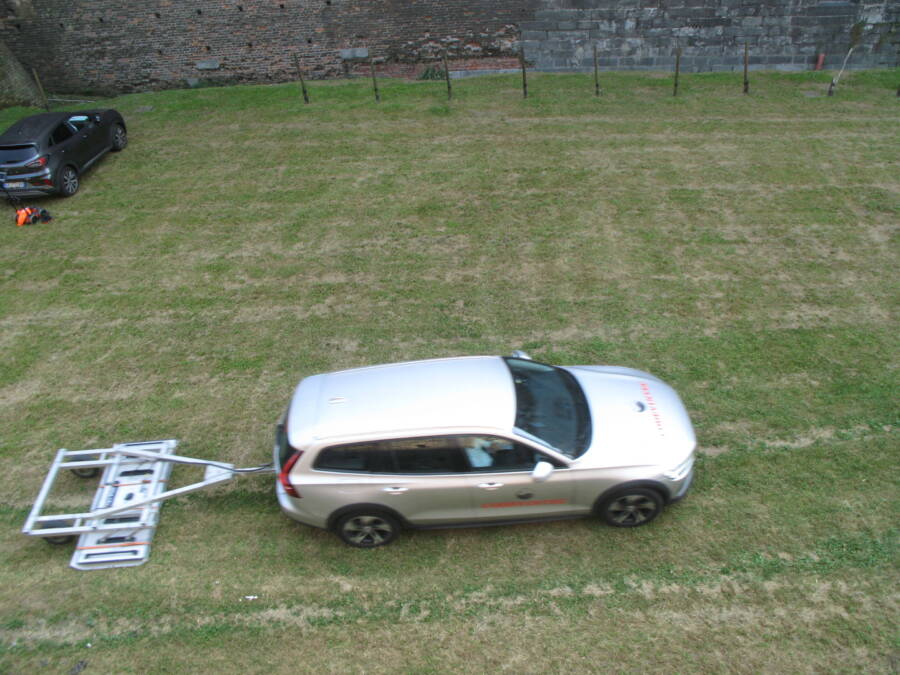
Politecnico di MilanoA car uses radar to map the tunnels.
The team plans on further mapping the castle in their quest to create its “digital twin.” This will not only allow researchers to examine how the castle has changed over time, but also give tourists a more well-rounded experience when visiting.
“In addition to historical documentation, the data collected has also opened up new opportunities for the touristic enhancement of the Castle. The integration of augmented reality technologies and the creation of virtual paths would allow visitors to explore the underground environments and inaccessible historical places, offering an immersive experience that combines history and innovation.”
After reading about the secret underground tunnels, dive into the story of Disney’s secret tunnels under the Magic Kingdom. Then, read about 11 astounding underground cities from around the world.





